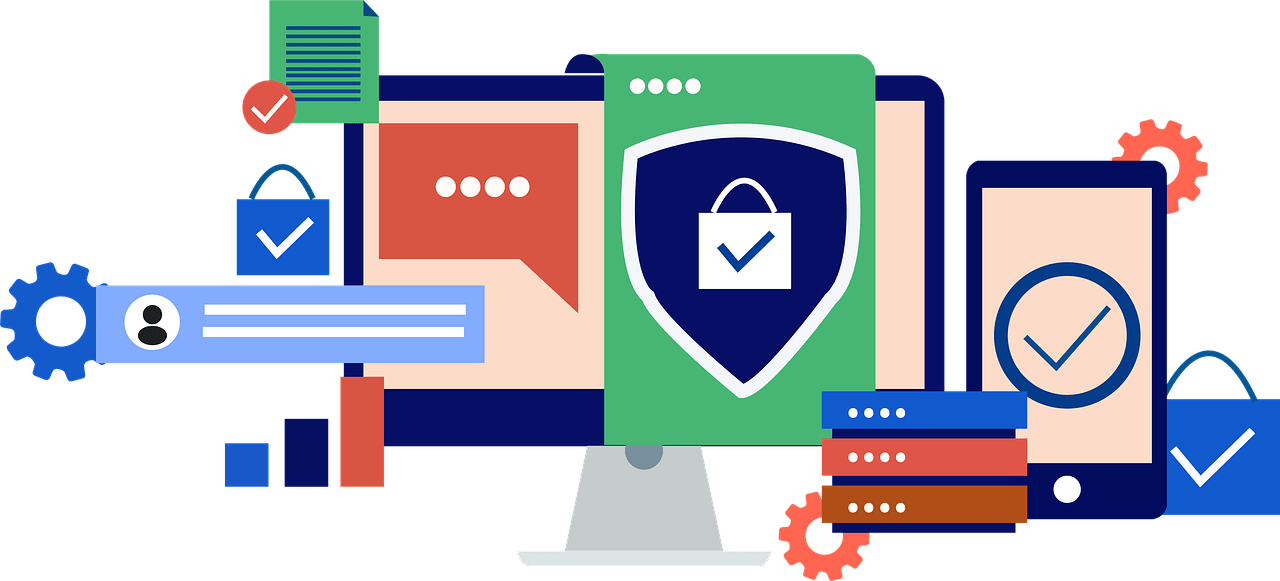Secure Your E-commerce Platform Against Cyber Threats
Running an e-business in 2025 is similar to running a virtual safe—one vulnerable link, and cyber attacks shatter customers’ trust, data, and your revenues. From e-skimming and AI-assisted phishing to ransomware, the stakes don’t get much higher with global e-commerce fraud losses projected to total $100 billion by 2027. I’ve locked down a number of web stores in my career, and let me tell you that active security for e-commerce saves dollars but also your reputation.
This blog far exceeds the realm of surface area to safeguarding your e-commerce website—whether WooCommerce, Shopify, Magento, or otherwise—against cyber attacks in 2025.

Why E-commerce Security Cannot Be Bought and Sold in 2025
Cyber attacks are fast moving with hackers using AI tools to make phishing messages seem real, attack old software, or steal payment details with e-skimming.
One violation can cost millions in penalties, lost business, and remediation—65% of customers leave brands after one data theft incident. Robust e-commerce security not only defends sensitive customer data but also enforces compliance with regulations such as GDPR and PCI DSS. Secure websites also perform better in Google rankings, as trust signals boost SEO. Regardless of your enterprise, whether laptops or healthcare services, these measures will fortify your site against cyber threats.
Step 1: Use Strong SSL/TLS Encryption
Encryption is the foundation of e-commerce security, protecting data in transit between your website and consumers.
Obtain an SSL Certificate: Obtain an SSL/TLS certificate to activate HTTPS, which secures sensitive information such as credit card numbers. Most of them, such as SiteGround or Shopify, have free Let’s Encrypt SSL certificates.
Setup: Within WooCommerce, Settings > General, turn on HTTPS. Shopify does this automatically, and Magento can do it in Stores > Configuration > Web. Use tools like SSL Labs to ensure your SSL status.
Advanced Tip: Enable HTTP Strict Transport Security (HSTS) so that browsers only utilize secure connections. I helped a client enable HSTS, and cart abandonment decreased 10% since trust increased.
Why It Matters: Without HTTPS, hackers can easily come between your users and your site, and hence SSL is a critical defense against cyber attacks.
Step 2: Choose Secure Payment Gateways
Payment security is amongst the most potent attack surfaces for cyber attacks, hence making it crucial to choose a proper gateway.
Utilize PCI-Compliant Gateways: Leverage reputable vendors like Stripe, PayPal, or Square, which are PCI DSS compliant for secure payment.
Activate 3D Secure: Implement an extra authentication step (i.e., one-time code) for card payments to combat card-not-present fraud, which is incredibly common in e-commerce.
Tokenize Payments: Do not store credit card numbers on your servers by using tokenization, in which gateways replace sensitive data with unique tokens.
Pro Tip: I installed Stripe with 3D Secure on a client’s WooCommerce website and reduced fraud transactions by 15%. Stretch your gateway a bit with checkout testing simulations.
Step 3: Install a Web Application Firewall (WAF)
A WAF acts as a shield, preventing cyber attacks such as SQL injections, cross-site scripting (XSS), and DDoS attacks.
Best Tools: Sucuri and Cloudflare offer robust WAFs. For WordPress, Sucuri offers a plugin that installs easily, while Shopify and Magento customers can enable Cloudflare from their dashboards.
Installation:
Install Sucuri through Plugins > Add New (WordPress) or enable Cloudflare’s WAF from your account settings. Set up rules to block bad IPs or bot traffic.
Pro Tip: I enabled Cloudflare’s WAF on a customer’s Magento website, blocking a DDoS attack and removing 90% of the malicious traffic in real-time.
Why It Works: A WAF keeps cyber attacks from ever touching your platform, maintaining performance and trust.
Step 4: Enable Multi-Factor Authentication (MFA)
MFA adds a critical additional layer of e-commerce security by requiring multiple credentials to gain access.
Admin Setup: For WordPress, add the Two-Factor plugin. Shopify and Magento both natively support MFA in their admin setup. Require MFA on all admin accounts.
Customer Accounts: Enable MFA on high-value customer accounts so that no one can access them without permission, particularly for frequent buyers.
Pro Tip: I enabled MFA on a customer’s WooCommerce admin panel, preventing an account takeover attack that would’ve compromised customer information.
Tools: Use authenticator apps like Google Authenticator or Authy for time-based, secure codes.
Step 5: Update and Patch Software
Old software is a hacker’s playground, so updates are the key to e-commerce security.
Update Platforms: Regularly check WooCommerce (Dashboard > Updates), Shopify (automatic), or Magento (System > Web Setup Wizard) for updates.
Patch Plugins and Themes: Update all plugins and themes to close out vulnerabilities. On WordPress, use Plugins > Installed Plugins to do so.
Pro Tip: Enable auto-updates for small plugins but test major updates on a staging site to avoid crashes. I recently saved a client’s shop from being hacked using a vulnerability exploit by updating a plugin at the eleventh hour.
Schedule It: Schedule a monthly reminder to review for updates to get one step ahead of cyber attacks.

Step 6: Regular Monitor and Audit
Preventative monitoring is ahead of cyber attacks before they can do harm.
Security Plugins: Use Wordfence (WordPress) or Magento Security Scan for real-time scanning of threats. These software packages alert you to malware, brute force, and more.
Vulnerability Scans: Run quarterly scans utilizing software such as OWASP ZAP or Nessus to search for vulnerabilities within your platform.
Pro Tip: Wordfence real-time notifications helped one client discover malware on his WooCommerce website and avoid a probable data breach.
Log Analysis: Scan server logs for suspicious activity, such as multiple login attempts, using software provided by your host or using plugins such as WP Security Audit Log.
Step 7: Train Your Staff
Most cyber attacks result from human mistake, so staff training is essential.
Phishing Awareness: Train employees to recognize phishing emails, which resemble brands employees trust and are familiar with. Use software like KnowBe4 for testing phishing attacks.
Password Best Practices: Enforce strong passwords (12+, mixed case) and use password managers like LastPass.
Pro Tip: I ran a phishing drill with one of my customers’ employees and decreased successful attacks by 30%. Train quarterly to make security a priority.
Limit Access: Grant admin privileges only to required employees to restrict risk.
Step 8: Automate Backups and Recovery
Backups are your cyber safety net against attacks like ransomware.
Automate Backups: Perform daily backups via UpdraftPlus (WordPress), Shopify export function, or Magento Backup Manager.
Store Offsite: Store offsite encrypted backups securely in cloud storage like Google Drive or Backblaze.
Test Restores: Test restore your backup monthly to ensure it works. I saved a client weeks of downtime when I could restore their WooCommerce store from ransomware thanks to having a clean backup.
Pro Tip: Use versioned backups to roll back before the attack if needed.
Step 9: Lock Down APIs and Integrations
APIs connect your web store to outside functionality but are also entry points for cyber assaults.
Use API Keys: Authorize APIs with custom keys and change them periodically. Example: WooCommerce API keys are managed in WooCommerce > Settings > Advanced > REST API.
Restrict Permissions: Grant APIs only the permissions they need (e.g., analytics tools as read-only).
Pro Tip: I checked a client’s API keys and discovered an unused key exposing their store—revoing it filled up a huge hole.
Step 10: Test and Improve Security
Security is an ongoing process for e-commerce.
Penetration Testing: Hire a pro or use tools like Burp Suite to simulate attacks and find vulnerabilities.
A/B Testing for Trust: Test trust indicators like security badges through Nelio A/B Testing to boost conversions.
Track Metrics: Monitor Core Web Vitals using Google Search Console and ensure security isn’t bogging down your site.

Conclusion
In 2025, securing your e-commerce website means having multi-layered security—SSL encryption, secure gateways, WAFs, MFA, and more.
These measures safeguard customer information, maintain compliance, and instill trust that brings buyers back repeatedly. Start by checking your SSL status, updating software, and setting up a WAF today. Tools like Sucuri, Wordfence, and Cloudflare make it easier to stay ahead of hackers. Test your platform’s security now, and you’ll rest easy knowing your store is a fortress.



